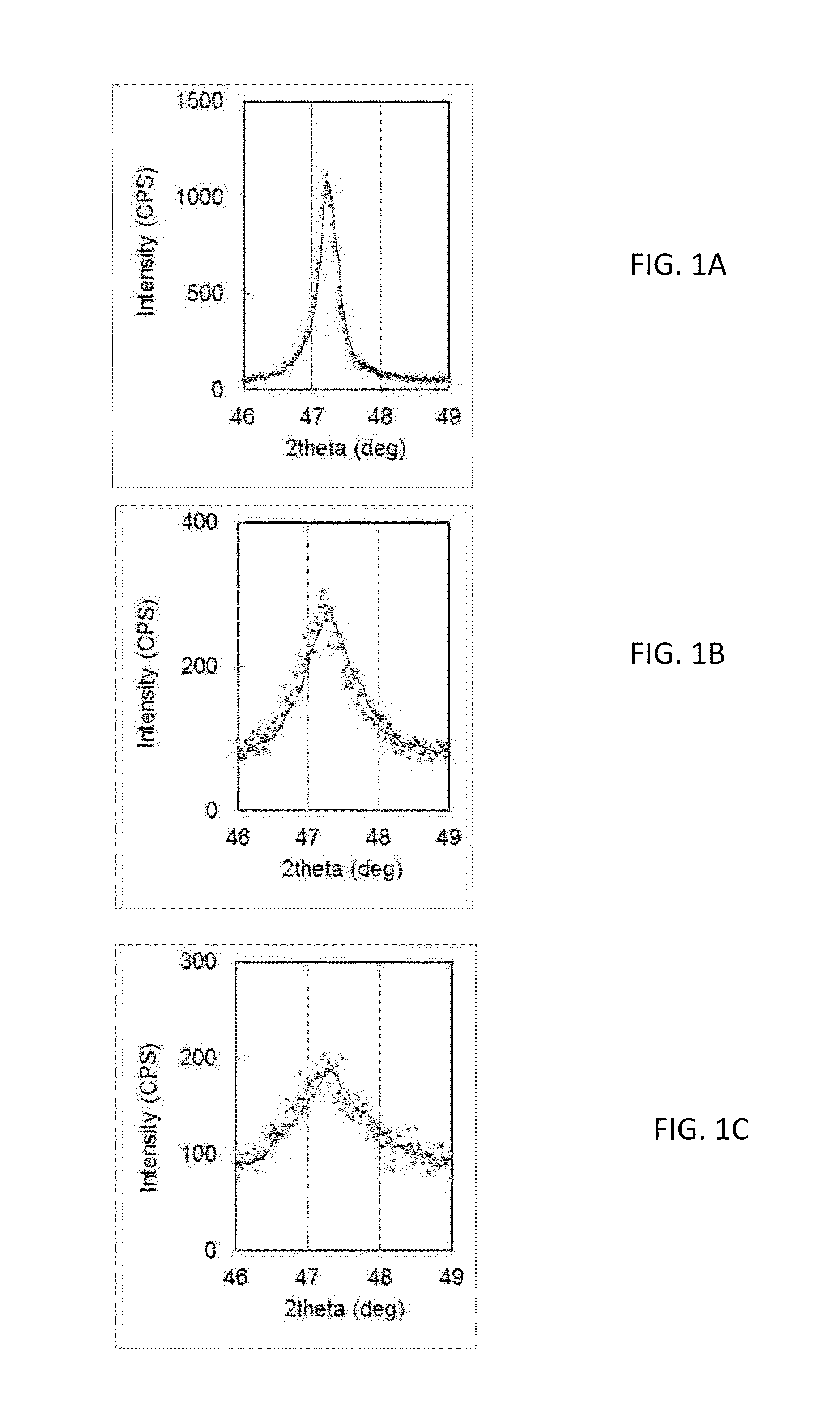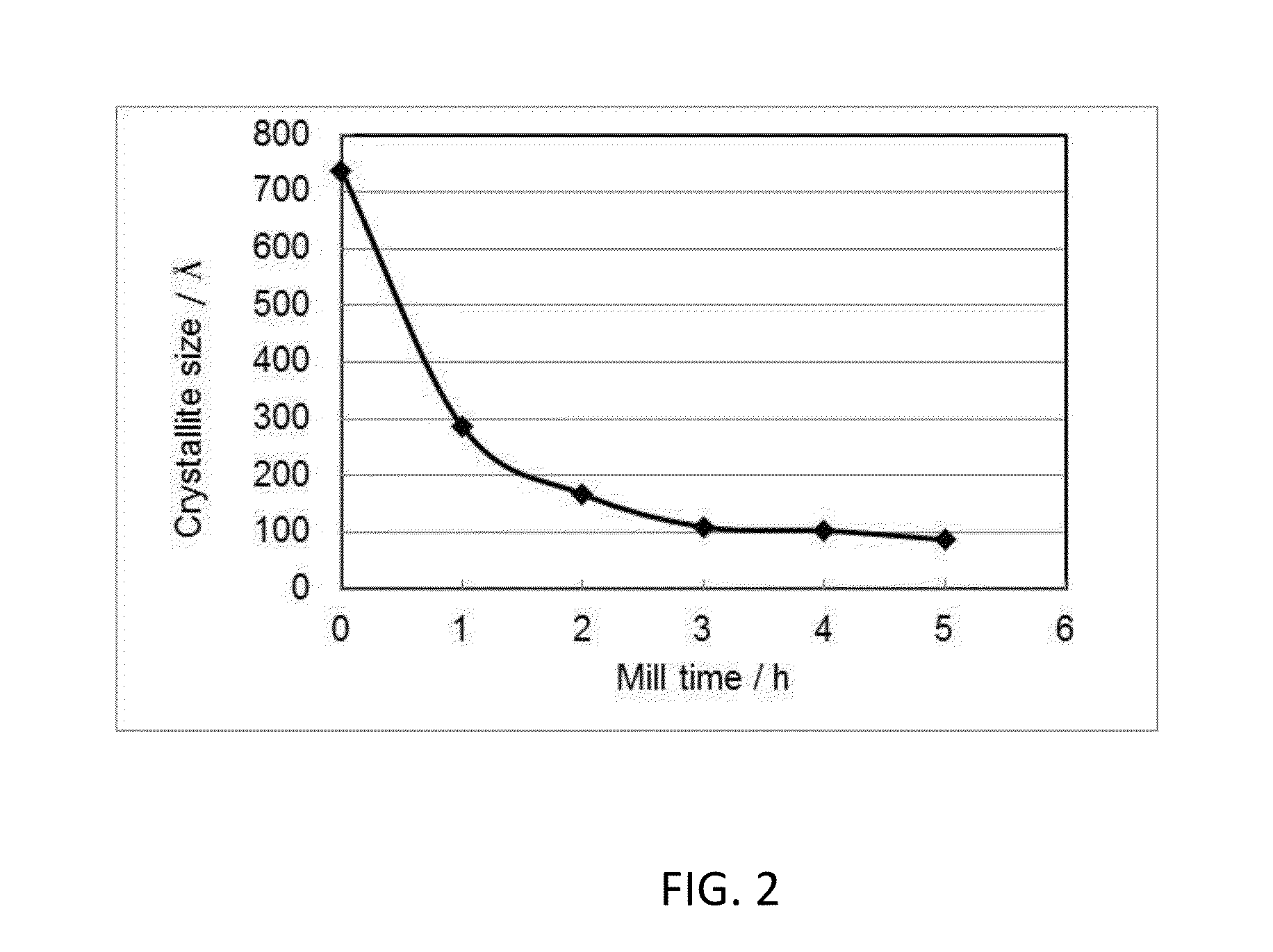Low crystallinity silicon composite anode material for lithium ion battery
a lithium ion battery, low-crystalline silicon technology, applied in the direction of non-metal conductors, cell components, conductors, etc., can solve the problems of limited capacity (372 mah/g), serious safety concerns, and si suffers from significant volume changes
- Summary
- Abstract
- Description
- Claims
- Application Information
AI Technical Summary
Benefits of technology
Problems solved by technology
Method used
Image
Examples
experiment 1
[0068]Si (42.5%), SiC (37.5%) and Super P (20%) by weight were mixed and milled for 10 hours (⅛″ media). After milling, 20% of a polystyrene block polymer was added into the mixture to form a polymeric milled mixture. The polymeric milled mixture was heated at 550° C. for 2 h. The resulting silicon nanocomposite was formed into an anode for a lithium ion battery. Li cell testing indicates that this composite has a starting capacity of 820 mAh / g and very good cycle life, see FIG. 14.
experiment 2
[0069]A composite was prepared from Si (35%), SiC (40%), graphite (20%), Cu (2.5%) and Al (2.5%). After 6 h milling, 17% of a polystyrene block polymer was added into the mixture and pyrolysis was performed at 550° C. for 2 h. The resulting silicon nanocomposite was formed into an anode for a lithium ion battery. Li cell testing indicates that this composite has a capacity of 800 mAh / g and very good cycle life, see FIG. 15.
experiment 3
[0070]Si (>98% purity, >5 μm average particle size) was blended with SiC (>97% purity, an average particle size ranging from 0.5-16 μm). The initial mixture has a 5:3 ratio of Si to SiC. Milling is performed for 6-12 hours in a large attritor or agitated mill at 320 RPM with an agitator diameter of 8″. The media to material ratio (ball to powder ratio) for this initial run is 50:1, by mass.
The resulting powder is then milled with a 1:4 ratio of carbon black (Super P), resulting in a composition of 50% Si, 30% SiC, and 20% amorphous C. Milling was performed with a ball to powder ratio of 40:1 over a period of 1-3 hours. Milling was performed at 106 RPM on the 1S machine with an 8″ diameter agitator. The resulting discharge capacity for the composite where the carbon was added and milled for one hour (after the higher energy step) delivered a discharge capacity of 1250 mAh / g.
PUM
 Login to View More
Login to View More Abstract
Description
Claims
Application Information
 Login to View More
Login to View More - R&D
- Intellectual Property
- Life Sciences
- Materials
- Tech Scout
- Unparalleled Data Quality
- Higher Quality Content
- 60% Fewer Hallucinations
Browse by: Latest US Patents, China's latest patents, Technical Efficacy Thesaurus, Application Domain, Technology Topic, Popular Technical Reports.
© 2025 PatSnap. All rights reserved.Legal|Privacy policy|Modern Slavery Act Transparency Statement|Sitemap|About US| Contact US: help@patsnap.com



